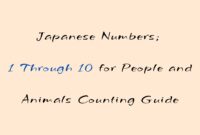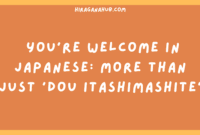If you’ve ever explored Japanese pop culture, anime, or fashion, you’ve
probably come across the word kawaii (可愛い / かわいい). But what does
“kawaii” really mean in Japanese, and why is it so deeply ingrained in
Japanese culture?
Kawaii in Japanese
The word kawaii (可愛い / かわいい) is commonly translated as “cute” in
English. However, its meaning extends beyond just cuteness. In Japan, kawaii
can describe anything charming, lovable, innocent, or even stylish. It’s not
just about looks—it’s an entire cultural aesthetic!
How to Pronounce “Kawaii” Correctly
Before we dive deeper, let’s clear up a common mistake: pronunciation.
- Kawaii (可愛い / かわいい) = /ka-wa-ii/ (kah-wah-ee) → Means
“cute.” - Kowai (怖い / こわい) = /ko-wai/ (koh-wai) → Means “scary.”
Many beginners mistakenly pronounce kawaii like kowai, leading to some funny
misunderstandings. Imagine trying to compliment a friend by saying “Anata wa
kowai!” (あなたは怖い!) which means “You are scary!” instead of “Anata wa
kawaii!” (あなたは可愛い!) meaning “You are cute!”
Different Ways to Say “Kawaii”
Japanese has many variations of kawaii, each adding a unique nuance:
- Totemo kawaii (とても可愛い / とてもかわいい) – “Very cute”
- Cho kawaii (超可愛い / ちょうかわいい) – “Super cute” (casual, slang)
- Meccha kawaii (めっちゃ可愛い / めっちゃかわいい) – “Extremely cute”
(Osaka dialect, casual) - Super kawaii (スーパー可愛い / スーパーかわいい) – “Super cute” (mix
of English and Japanese) - Anata wa kawaii (あなたは可愛い / あなたはかわいい) – “You are cute”
- Kawaii desu ne? (可愛いですね? / かわいいですね?) – “Isn’t it
cute?” - Kawaii koto! (可愛いこと! / かわいいこと!) – “Such a cute thing!”
(commonly used by older women) - Kawaii desho? (可愛いでしょ? / かわいいでしょ?) – “Cute, right?”
The Deep Cultural Meaning Behind “Kawaii”
In Japan, the kawaii culture is not just about cute characters or pastel
colors. It represents positivity, youthfulness, and a sense of being harmless.
From adorable mascots like Hello Kitty (ハローキティ) to kawaii fashion in
Harajuku, this aesthetic is seen everywhere.
1. Kawaii in Fashion
- Japanese fashion trends, such as Lolita fashion (ロリータファッション) and
Yami kawaii (病み可愛い / やみかわいい), showcase different interpretations
of cuteness. - Lolita fashion emphasizes Victorian-style dresses with lace and frills.
- Yami kawaii (literally “sick-cute”) blends darkness and mental health
awareness with adorable designs.
2. Kawaii in Language and Slang
Japanese people love using cute slang words. Some examples include:
- So kawaii! (そう可愛い! / そうかわいい!) – “So cute!”
- Watashi kawaii? (私可愛い? / わたしかわいい?) – “Am I cute?”
- Kawaii sugoi! (可愛いすごい! / かわいいすごい!) – “Cute and
amazing!”
There’s even a popular meme phrase:
“Mina saikou arigatou, kawaii!” (皆最高ありがとう、可愛い! /
みなさいこうありがとう、かわいい!) which means “Everyone, thank you, you’re
the best! Kawaii!”
Kawaii in Everyday Life
Unlike in the West, where “cute” is often seen as childish, in Japan, kawaii
is embraced by all ages and genders. Many businesses use kawaii mascots to
make their brand more approachable. Even police departments have adorable
mascots!
How to Use “Kawaii” in Conversation
Complimenting Someone:
- Kawaii desu ne! (可愛いですね! / かわいいですね!) → “You’re cute!”
- Anata wa kawaii! (あなたは可愛い! / あなたはかわいい!) → “You are
cute!”
Reacting to Something Cute:
- Cho kawaii! (超可愛い! / ちょうかわいい!) → “Super cute!”
- Meccha kawaii! (めっちゃ可愛い! / めっちゃかわいい!) → “Extremely
cute!”
Questioning Cuteness:
- Kawaii desu ka? (可愛いですか? / かわいいですか?) → “Is it cute?”
- Kawaii kunai! (可愛くない! / かわいくない!) → “Not cute!”
Understanding kawaii meaning (可愛い / かわいい) is key to grasping Japanese pop
culture and daily life. It’s not just a word—it’s an entire way of seeing the
world with more warmth and joy. So next time you see something adorable, don’t
just say “cute”—say “kawaii!” 😊



